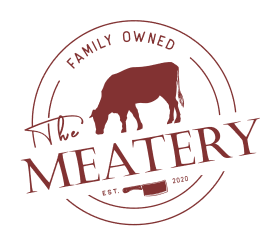Australian Wagyu represents a fascinating chapter in the story of this prestigious beef cattle breed. Originally from Japan, Wagyu cattle were first introduced to Australia in the 1980s, primarily through the importation of Japanese Black (Kuroge Washu) and Japanese Red (Akaushi) genetics. The term "Wagyu" literally means "Japanese cow," but Australian producers have developed their own distinct approach to breeding these remarkable animals.
The key differences in Australian Wagyu include:
- Larger frame size compared to Japanese counterparts
- Enhanced adaptability to various climatic conditions
- Improved growth rates and feed efficiency
- Distinctive flavor profile that combines Wagyu's signature marbling with robust beef characteristics
Australian producers have successfully created a product that balances the legendary qualities of Japanese Wagyu with practical farming considerations and market demands. This evolution has made Australian Wagyu more accessible while maintaining exceptional quality standards.
What sets Australian Wagyu apart is the unique crossbreeding program that combines Japanese Wagyu genetics with carefully selected local cattle breeds, particularly Angus. This strategic breeding approach has resulted in cattle that maintain the superior marbling characteristics of Japanese Wagyu while adapting well to Australia's diverse climate and environment.
While both Japanese and Australian Wagyu grading systems focus on quality assessment, there are significant differences in their approaches and standards. The Japanese system, known as the JMGA (Japan Meat Grading Association) system, uses a more complex methodology that considers multiple factors beyond marbling.
Key differences include:
- Scale Range: Japanese system grades from A1 to A5, while Australian system uses 0-9+ for marbling
- Grading Criteria: Japanese system evaluates yield grade and quality grade simultaneously
- Marbling Assessment: Japanese BMS (Beef Marbling Score) ranges from 1-12, while Australian MS ranges from 0-9+
- Quality Factors: Japanese system places higher emphasis on meat brightness, color, and texture
The Australian system was developed to be more accessible and practical while maintaining high-quality standards. It provides a clear, straightforward assessment that aligns with international market requirements while acknowledging the unique characteristics of Australian Wagyu production.
Australian Wagyu Grading System
The Australian Wagyu grading system, developed by the Australian Wagyu Association (AWA), provides a comprehensive framework for evaluating Wagyu beef quality. This system primarily focuses on marbling scores, ranging from 0 to 9+, with higher numbers indicating more intense marbling patterns.
The key components of the Australian grading system include:
- Marble Score (MS): Evaluated on a scale of 0-9+
- Meat Color: Assessed on a 1-9 scale
- Fat Color: Rated from 0-9
- Eye Muscle Area (EMA): Measurement of the ribeye muscle
- Fat Depth: Assessment of external fat coverage
What makes this system unique is its objective approach to quality assessment. Each carcass is evaluated using digital imaging technology and trained graders, ensuring consistency and reliability in grading outcomes. The system has been designed to provide transparency and confidence to both producers and consumers, making Australian Wagyu a trusted premium product in the global market.
Sustainability And Animal Welfare
Australian Wagyu production stands out for its strong commitment to sustainability and animal welfare practices. The industry has developed comprehensive guidelines that ensure ethical treatment of cattle while maintaining environmental responsibility.
Key sustainability initiatives include:
- Rotational grazing systems to protect soil health
- Water conservation practices
- Reduced carbon footprint through efficient feed management
- Implementation of renewable energy sources in farming operations
Animal welfare standards in Australian Wagyu production are particularly stringent, focusing on:
- Stress-free handling techniques
- Comfortable living conditions
- Regular veterinary care
- Natural feeding programs
Is Australian Wagyu full blood?
Australian Wagyu cattle come in various genetic compositions, and not all are considered "full-blood." The term "full-blood" refers to animals that can trace their entire ancestry back to Japanese Wagyu cattle, with no other breed influence.
The different categories of Australian Wagyu include:
- Full-blood (F1): 100% pure Wagyu genetics
- Purebred: Minimum of 93.75% Wagyu genetics
- Crossbred: Typically 50% Wagyu genetics (F1)
- Wagyu-influenced: Less than 50% Wagyu genetics
Each category serves different market segments and offers unique characteristics. While full-blood Wagyu represents the highest genetic purity, crossbred varieties often provide an excellent balance of marbling and traditional beef characteristics that many consumers prefer.
Is all Australian Wagyu halal in the USA?
Not all Australian Wagyu imported to the USA is automatically Halal-certified. While Australia has a robust Halal certification system, and many Australian meat processors maintain Halal certification, the Halal status of Wagyu beef depends on several factors:
- Processing facility certification
- Slaughter methods used
- Supply chain compliance
- Individual producer certification
Consumers seeking Halal Australian Wagyu should:
- Look for official Halal certification marks
- Verify certification with reliable authorities
- Check with specific suppliers or retailers
- Request documentation if necessary
Many Australian Wagyu producers do maintain Halal certification to serve diverse market requirements, but it's essential to verify certification for specific products and suppliers.









